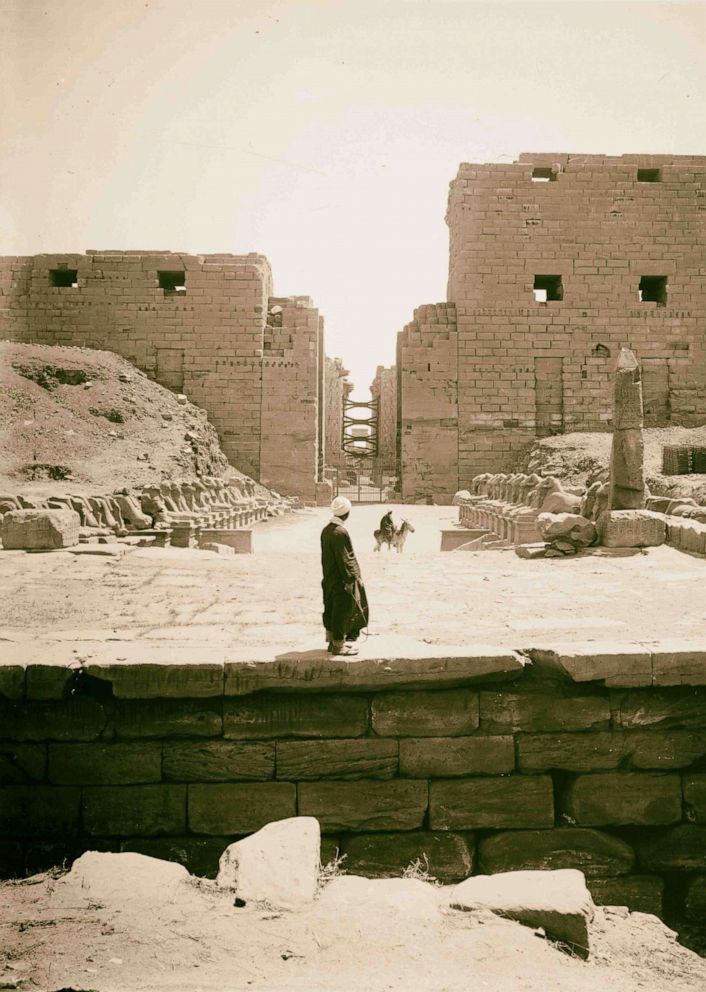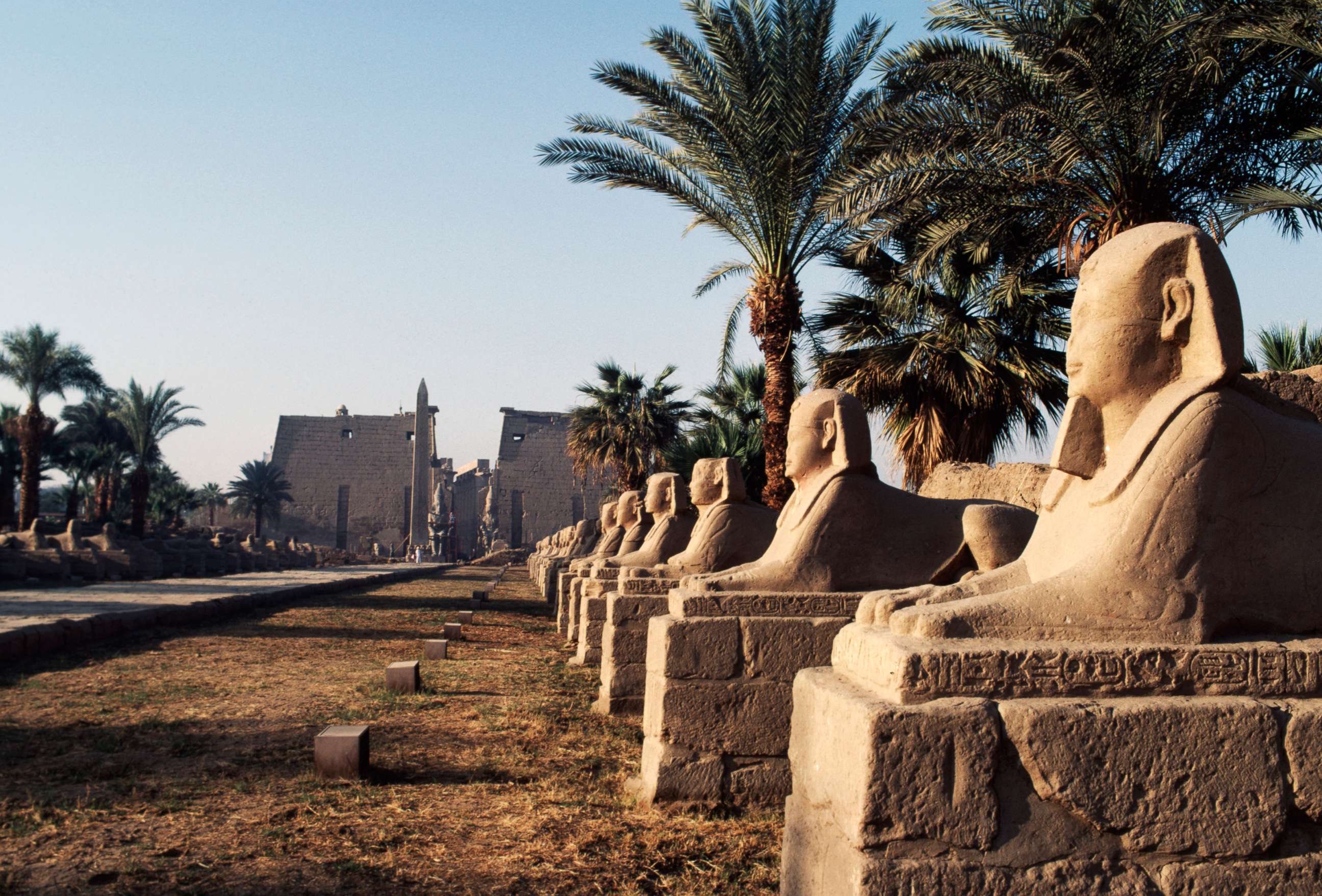Egypt opens Luxor's ancient 'Avenue of Sphinxes' to great fanfare
The road was uncovered over decades in the ancient city of Thebes.
Egypt on Thursday opened to the public a 3,000-year-old sphinx-filled avenue in the Southern city of Luxor to great fanfare, having wrapped up restoration works that took over seven decades to complete.
In an attempt to wow tourists and lure them back after Egypt's vital tourism industry took a fresh battering because of the COVID-19 pandemic, the country held a lavish ceremony to celebrate the opening of the Avenue of Sphinx, an ancient 1.7-mile-long walkway connecting Karnak Temple with Luxor Temple.
It's the second such event in six months following a "royal procession" that Egypt had held in April to parade 22 mummies through the streets of Cairo as they were conveyed to a newly inaugurated museum.
With President Abdel-Fattah el-Sisi and his wife in attendance, officials said the event intended to showcase Luxor, a monument-rich city that once served as Egypt's capital, then called Thebes, as the "biggest open museum in the world."

The first trace of the Avenue of Sphinxes was found in 1949 when Egyptian archeologist Mohammed Zakaria Ghoneim discovered eight statues near the Luxor Temple. Further statues flanking the road were uncovered in subsequent decades, with excavation works interrupted for long intervals as Egypt fought several wars.
The path originally had 1,057 statues, a third of which already had been unearthed with the rest still pedestals, said antiquities minister Khaled el-Anani.
"We are not done yet -- we are still working to uncover more rams," he added.
The statues are divided into three shapes, the first being a body of a lion with a ram's head that was erected over a nearly 1,000-foot area between the Karnak Temple and the Precinct of Mut during the reign of New Kingdom ruler Tutankhamen, famously known as King Tut.

The second shape is a full ram statue, built in a remote area during the reign of the 18th dynasty's Amenhotep III before being later moved to the Temple of Khonsu in the Karnak complex.
The third and most populous shape is one of a sphinx (a lion's body and a human's head), with the statues stretching over a mile from the Precinct of Mut to the Luxor Temple. They were erected during the tenure of 30th Dynasty ruler Nectanebo I (380-362 B.C.).
Opet festival
The highlight of Thursday's ceremony was a modern reenactment of the ancient Opet festival, which dates back 3,400 years.
The festival primarily involved a procession in which shrines of the "triad of deities" -- supreme god Amun-Re, his consort Mut and their son Khonsu -- were paraded by priests on wooden barques from Karnak to Luxor in a symbolic recreation of their marriage.
The 27-day feast also marked the Nile River's annual flooding. The parade would set off from the Karnak Temple and head southward to the Luxor Temple at the other end of the avenue.
With bright yellow lights illuminating temples and fireworks lighting up the night sky, a similar procession was held, with ancient hymns playing in the background.
The festive atmosphere stood in stark contrast to an eerily quiet morning in Luxor. Most shops were shuttered and streets seemed to empty only a few hours before the event began.
However, a flock of visitors to the city was evident as flights from Cairo to Luxor were fully booked and the city's luxurious hotels filled up fast.
Luxor was given a facelift ahead of the opening, with roads paved, dirt swept away (even in the most ramshackle areas) and colorful letters of Luxor displayed on walls.
Residents seemed happy that Luxor was given a new lease of life after the ancient city, like many of the nation's tourist sites, was hit hard by the pandemic.
"This day reminds me of the past, when we were very busy transporting tourists," a Taxi driver, who said he preferred to be simply called Eweis, told ABC News. "This opening is a blessing to the whole city. Can they just open ancient sites every day? We have a lot to offer here."




